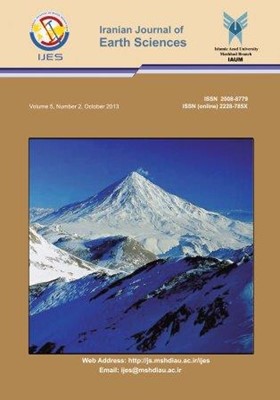Geochemical Investigation of Davarzan Surface Soils, West of Sabzevar, NE Iran
Subject Areas : MineralogyS.A. Mazhari 1 * , A.R. Mazloumi Bajestani 2 , R. Sharifiyan Attar 3
1 - Department of Geology, Payame Noor University, 19395-4697 Tehran, Iran.
2 - Department of Geology, Payame Noor University, 19395-4697 Tehran, Iran.
3 - Department of Geology, Payame Noor University, 19395-4697 Tehran, Iran.
Keywords:
Abstract :
The geochemical composition of surface soils and potential bedrocks in Davarzan area has been investigated to determine soil origin and evaluate environmental aspects. Davarzan plain is composed of soils and deposits derived by weathering and transportation of different bedrocks from northern mountains. The bedrocks consist of Eocene (andesitic to basaltic lavas and volcano-sedimentary rocks composed of alternating beds of marl, sandstone and tuffaceous lime stone) and ophiolitic (peridotites and serpentinites) units. Davarzan soils have high concentration of Mg (22000-28000 ppm), Cr (693-1353ppm), Co (31-51ppm) and Ni (486-1105 ppm) and low Al (28000-51000 ppm), K (3000-10000 ppm), Na (1700-7900 ppm), Ce (10-22 ppm), Li (9-16 ppm) and Zn (19-30 ppm). These characteristics are very similar to composition of serpentinite and peridotite rocks and completely different from other lithologies. It could be inferred that these rocks are the major parental materials for Davarzan soils. The strong correlation between major and trace elements of soil samples indicates identical geogenic origin for their production. Anthropological processes do not have significant effect on the soil composition so that all samples (include natural, agricultural and residential) show the same geochemical particulars. The content of Ni, Cr and Co is higher than maximal permissible concentration for environmental issues and could be regarded as potential risk in related topics

